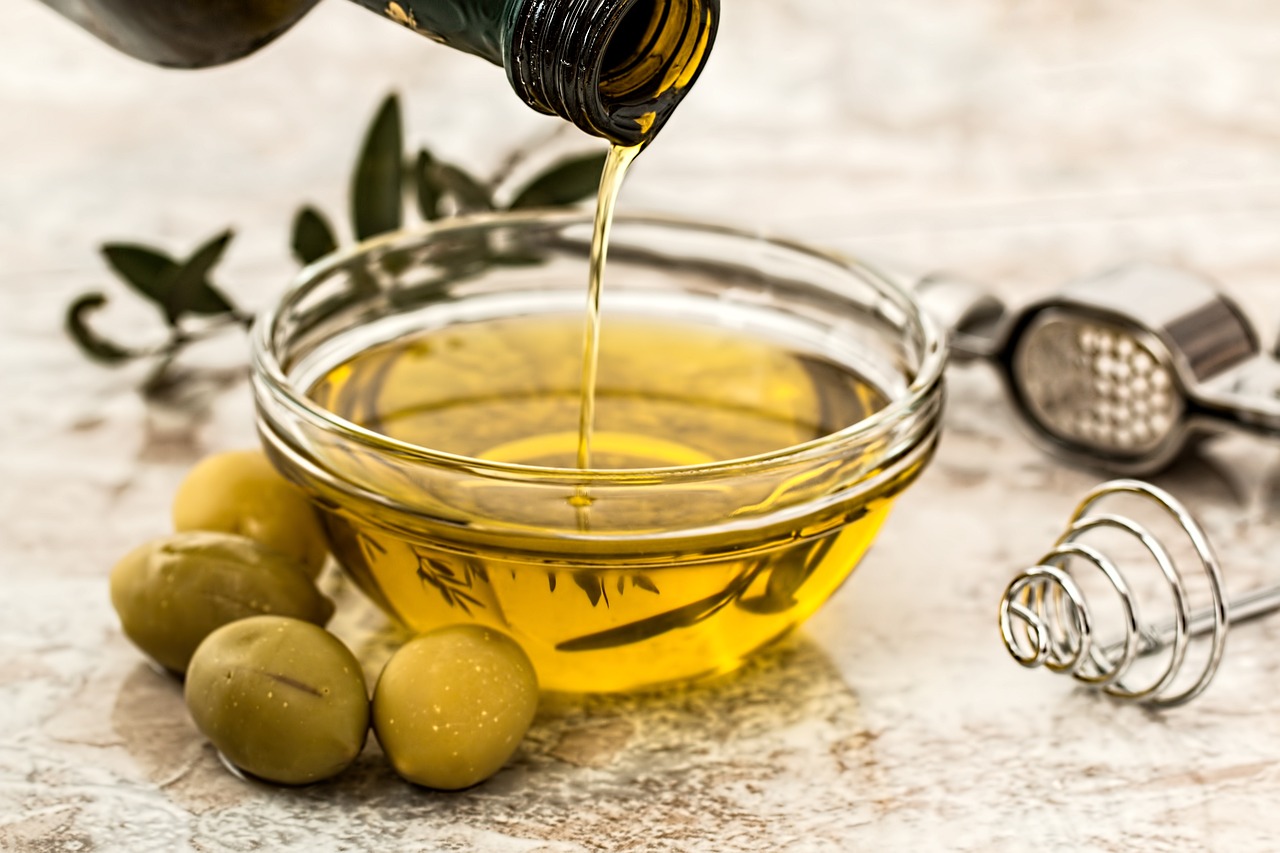The Essence of Olive and Olive Oil: Accurate Health Elixir for All in 2025
1 . Olive oil, a staple of the Mediterranean diet, is celebrated for its flavour and health benefits. Extracted from the fruit of the olive tree, olive oil is a natural elixir that has been part of human culture for millennia. Its uses range from culinary to cosmetic, and its health benefits are supported by a growing body of scientific research.
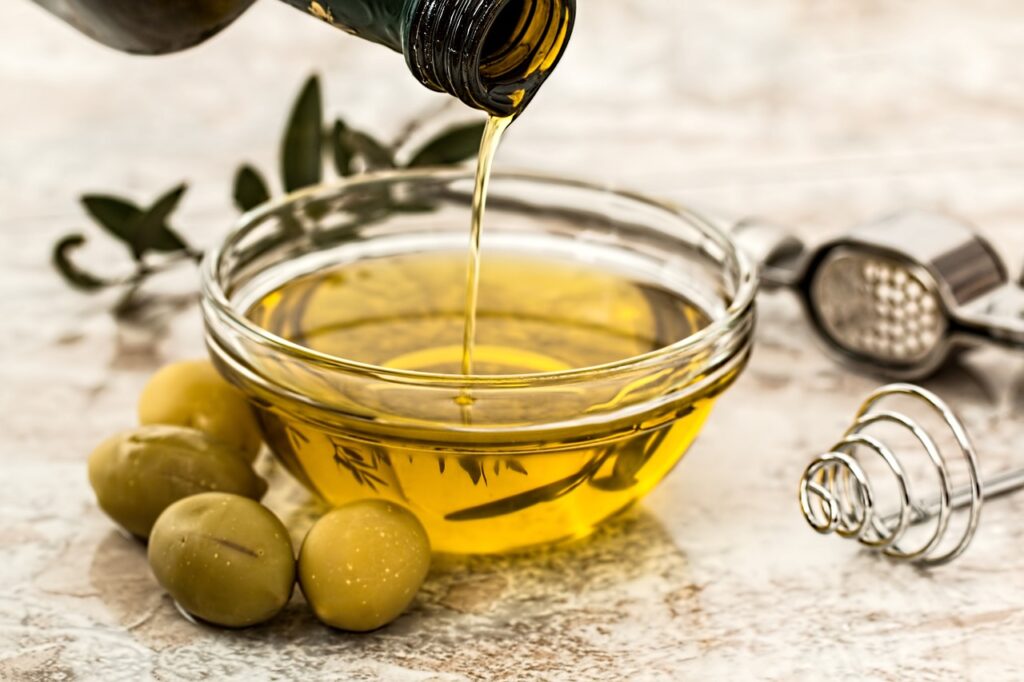
2 . Ingredients of Olive Oil
Olive oil is predominantly made up of monounsaturated fatty acids (MUFAs), particularly oleic acid, which constitutes about 73% of its total content1. This healthy fat is known for its stability at high heat, making olive oil a preferred choice for cooking1. Besides MUFAs, olive oil contains saturated fats and polyunsaturated fats, including omega-6 and omega-3 fatty acids1. It’s also rich in antioxidants like vitamin E and vitamin K, as well as polyphenols such as oleocanthal and oleuropein12.
3 . Uses of Olive Oil
- Culinary: Olive oil is a versatile ingredient in the kitchen, used for sautéing, frying, dressing salads, and as a base for sauces.
- Cosmetic: Due to its moisturizing properties, it’s used in skin care products and applied directly to the skin and hair.
- Medicinal: Olive oil has been used traditionally as a remedy for various ailments, including ear infections and skin conditions.
4 . General Health Benefits
The health benefits of olive oil are extensive:
- Heart Health: It can improve heart health by reducing blood pressure and cholesterol levels1.
- Anti-inflammatory: Olive oil has anti-inflammatory properties, thanks to compounds like oleocanthal, which acts similarly to ibuprofen1.
- Cancer Prevention: Some studies suggest that olive oil’s antioxidants could help prevent cancer1.
- Stroke Prevention: Regular consumption may help prevent strokes by maintaining healthy blood flow1.
5 . Benefits for Diabetic Patients
For those managing diabetes, particularly type 2 diabetes, olive oil can be a valuable addition to their diet:
- Blood Sugar Control: Olive oil can help maintain stable blood sugar levels, especially when added to meals with a high glycemic index3.
- Reduced Inflammation: The anti-inflammatory effects of olive oil are beneficial in reducing chronic inflammation associated with diabetes3.
- Heart Health: Since diabetes increases the risk of heart disease, the heart-healthy aspects of olive oil are particularly important for diabetic patients3.
- Antioxidant Protection: Antioxidants in olive oil can reduce oxidative stress caused by high blood sugar levels, which is crucial in managing diabetes complications4.
In conclusion, olive and olive oil are not just culinary delights but also potent health allies. For diabetic patients, incorporating olive oil into their diet can offer multiple benefits, aiding in the management of their condition and enhancing overall well-being.
Enjoy the rich flavours and health benefits of olive oil, and let it be a golden thread weaving through the tapestry of your nutritious diet.
6 . Types of olive oil:
Extra Virgin Olive Oil (EVOO):https://a.co/d/60dVwp5
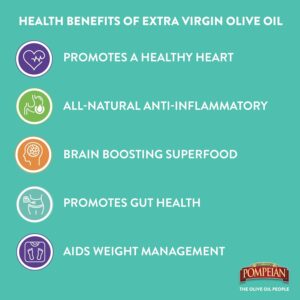
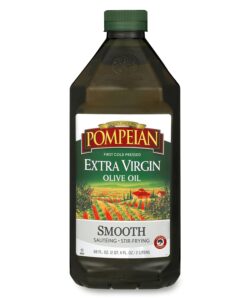
-
- Highest Grade: EVOO is often considered the gold standard in terms of flavor and health benefits.
- Production: It’s made only via mechanical methods (olives are pressed, oil is separated from the pulp via centrifugation, and then filtered or racked to remove any remaining solids).
- Quality: Never exposed to chemicals or high heat, EVOO maintains high levels of bioactive compounds like oleuropein, hydroxytyrosol, and oleocanthal.
- Flavour: Ranges from green to gold, with aromas from fresh green and grassy to ripe and fruity. Earlier harvest oils have a bold peppery flavor.
- Uses: Ideal for dressings, dipping, and drizzling on finished dishes.
Virgin Olive Oil:
-
-
- Quality: Slightly lower in quality than EVOO, containing about 1.5% free acidity.
- Production: Made via mechanical methods but may have slightly higher acidity.
- Flavor: Varies from mild to fruity.
- Uses: Suitable for cooking and dressings.
-
Refined Olive Oil:
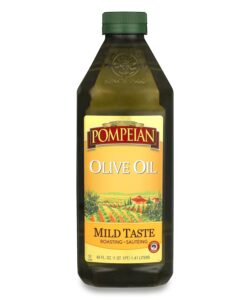
-
- Also labelled as “pure olive oil” or just “olive oil.”
- Processing: Usually refined using heat and chemicals.
- Flavour: Less pronounced flavour compared to EVOO and virgin olive oil.
- Uses: Good for cooking due to its neutral taste.
Extra Light Olive Oil:
-
- Misconception: Despite the name, it’s not lower in calories; it refers to the mild flavour and colour.
- Processing: Highly refined and often blended with a small amount of EVOO.
- Uses: Suitable for high-heat cooking without imparting a strong olive flavour.
Cold-Pressed Olive Oil:
-
- Production: Extracted without heat, preserving more nutrients and flavour.
- Quality: Similar to EVOO but not always labelled as such.
- Uses: Great for salads, marinades, and light cooking.
Remember, the healthiest pick among cooking oils is any olive oil from the list above. Choose based on your taste preferences and culinary needs. Enjoy the rich flavours and health benefits of this ancient elixir!
7 . Common Misconceptions about Olive Oil:
- Myth: Olive Oil Isn’t Suitable for Cooking
- Fact: High-quality olive oil, especially extra virgin olive oil (EVOO), is perfectly safe for cooking. It has a high smoke point (up to around 450°F), making it ideal for sautéing, roasting, and grilling. The polyphenols in EVOO protect it from oxidizing (smoking) at high heat1.
- Myth: All Olive Oils Taste the Same
- Fact: Olive oils vary in flavour based on their origin, varietal, and harvest time. For example:
- COOK, made from Arbequina olives grown in Central California, has a robust and nutty flavour.
- HEAL, also from Arbequina olives but grown in Northern California, has a fruity, bright, slightly grassy, and peppery taste1.
- Fact: Olive oils vary in flavour based on their origin, varietal, and harvest time. For example:
- Myth: The Color Indicates Quality
- Fact: The colour of olive oil depends on the type of olives used and their ripeness at harvest. Green or golden hues don’t necessarily indicate quality. Instead, look for labels like ‘extra virgin,’ ‘organic,’ ‘single origin,’ and those harvested within the last 12-18 months12.
- Myth: Olive Oil Gets Better With Age
- Fact: Unlike wine, olive oil does not improve with age. Fresh olive oil provides the best flavour and health benefits. Consume it within 18 months of harvest1.
- Myth: Extra Virgin Olive Oil Is Expensive
- Fact: While high-quality EVOO may be more expensive than regular olive oil, its health benefits and superior flavour make it worth the investment. With Zimms Organics, you can subscribe and save 25% on premium olive oil1.
- Myth: All Olive Oil Is Authentic
- Fact: Unfortunately, not all olive oils on the market are pure or authentic. Some brands mix olive oil with cheaper oils like canola or sunflower. Look for transparent sourcing labels like ‘certified organic,’ and ‘harvest date,’ and choose trusted brands like Zimms Organics1.
Remember, understanding the nuances of olive oil can enhance your culinary experience and promote better health!
8 . Creative Ways to Use Olive Oil in Your Cooking:
- Olive Oil and Eggs:
- Scrambled Eggs: Try cooking scrambled eggs with a drizzle of olive oil. It brings out the richness of the eggs and complements the buttery flavour.
- Poached Eggs: Poach eggs in olive oil for a delicate texture. After poaching, strain the oil and save it for future use.
- Olive Oil and Vegetables:
- Roasted Vegetables: Coat your favourite veggies with olive oil and roast them. The result is a flavorful side dish or a healthy snack.
- Salad Dressing: Mix gourmet olive oil with balsamic vinegar for a simple yet delicious salad dressing. Drizzle it over greens and add a pinch of salt for a restaurant-worthy salad.
- Olive Oil and Cheese:
- Cheese Pairing: Enjoy cheese with a drizzle of olive oil and aged balsamic. Add lemon juice, citrus zest, and capers for extra flavour.
- Olive Oil and Bread:
- Bread Dipping: Dip crusty bread into olive oil for a sensory delight. It pairs well with dense bread like Focaccia.
- Dips: Create a base for dips by mixing olive oil with butter, anchovy, garlic, or herbs. The contrasting flavours complement the bread perfectly.
- Infused Oils:
- Flavour Infusion: Heat olive oil and infuse it with lemon, orange, lime zest, crushed red pepper, basil leaves, or rosemary. Use it immediately over pasta or as a dipping sauce.
- Pesto Saver: Before refrigerating homemade pesto, add a thin layer of fine virgin olive oil on top to preserve its green colour.
Remember, olive oil isn’t just for salads—it’s a culinary gem waiting to elevate your dishes!
9 . Extra Virgin Olive Oil (EVOO) is a True Gem When it Comes to Health Benefits.
- Rich in Healthy Monounsaturated Fats:
- EVOO contains a predominant monounsaturated fat called oleic acid, making up 73% of its total content.
- Beneficial Effects: Oleic acid has anti-inflammatory properties and may even impact genes linked to cancer1.
- Cooking Choice: Monounsaturated fats are resistant to high heat, making EVOO a healthy choice for cooking.
- Loaded with Antioxidants:
- EVOO is a nutritional powerhouse, containing vitamins E and K along with powerful antioxidants.
- Biological Effects: These antioxidants fight inflammation and protect your blood cholesterol from oxidation, reducing the risk of heart disease1.
- Anti-Inflammatory Properties:
- Chronic inflammation is linked to various diseases, including cancer, heart disease, diabetes, and Alzheimer’s.
- Oleocanthal: EVOO contains oleocanthal, which works similarly to ibuprofen, an anti-inflammatory drug.
- Oleic Acid: The main fatty acid in olive oil, oleic acid, can reduce inflammatory markers like C-reactive protein (CRP)1.
- Stroke Prevention:
- EVOO may help prevent strokes by maintaining healthy blood flow to the brain.
- Antioxidants and Healthy Fats: These components contribute to overall cardiovascular health1.
- Protection Against Cancer:
- Some studies suggest that EVOO’s antioxidants could help prevent cancer.
- Oleocanthal: This compound may play a role in cancer prevention1.
- Heart Health:
- EVOO is associated with a lower risk of heart disease.
- Mediterranean Diet: It’s a staple in this heart-healthy eating style.
- Healthy Fat Balance: EVOO contains more healthy unsaturated fats than unhealthy saturated fats2.
Remember, incorporating EVOO into your diet can have a profound impact on your well-being. Aim for 1 to 4 tablespoons per day, adjusting based on your individual needs. So go ahead, drizzle that golden elixir, and savour its health benefits!
10 . Olive Oil Massage
- Relieves Pain and Inflammation:
- Olive oil massage helps soothe sore muscles, strained joints, and inflamed tissues.
- It provides relief from muscle pains, spasms, sprains, and arthritis-related discomfort.
- Combining massage with yoga exercises for the back and legs enhances its effectiveness1.
- Stress Reduction:
- Olive oil massage calms the nerves, increases blood circulation, and promotes relaxation.
- It’s an excellent way to unwind, especially amidst the pressures of daily life1.
- Heart Health:
- Olive oil is heart-healthy, even when used externally.
- During an olive oil massage, the therapist works the oil through the muscles in the direction of the heart, benefiting cardiovascular health2.
- Skin Nourishment:
- Olive oil moisturizes and nourishes the skin deeply.
- It’s particularly beneficial for dry skin, leaving it soft and supple2.
- Compatibility and Allergenic Potential:
- Olive oil is generally well-tolerated by all skin types.
- It has low allergenic potential, making it suitable for sensitive skin or those with allergies to other oils2.
- Viscosity and Absorption:
- Olive oil has medium to high viscosity, providing excellent lubrication for massage.
- It penetrates the skin sufficiently while leaving a protective layer to lock in moisture2.
- Nutrient Content:
Remember to choose extra virgin olive oil for massage, as it retains the highest quality and nutrients. Heat it slightly for a pleasant massage experience. Create a relaxing ambience, and enjoy the therapeutic benefits of this ancient elixir!
11 . Massaging Techniques :
- Effleurage:Description: Effleurage involves long, sweeping strokes using gentle pressure. It’s a foundational technique in massage therapy.
- Application: Warm up the olive oil between your hands. Then, use your palms and fingers to glide smoothly over the skin in a continuous motion. Start from the neck or shoulders and move down the body.
- Purpose: Effleurage helps relax muscles, improve circulation, and prepare the body for deeper massage techniques.
- Kneading:
- Description: Kneading involves lifting and squeezing the muscles rhythmically.
- Application: Use your fingers, thumbs, or palms to knead the muscles gently. Imagine kneading dough. Focus on areas with tension or knots.
- Purpose: Kneading releases muscle tension, improves blood flow, and promotes relaxation.
- Circular Motions:
- Description: Circular motions are excellent for stimulating circulation and relieving muscle stiffness.
- Application: Use your fingertips or palms to create circular movements on the skin. Adjust the pressure based on comfort.
- Purpose: Circular motions help break down adhesions, increase flexibility, and reduce muscle soreness.
- Up-and-Down Strokes:
- Description: These strokes work well for massaging the limbs.
- Application: Rub the olive oil over the arms or legs in an up-and-down motion. Apply consistent pressure while moving from the extremities toward the heart.
- Purpose: Up-and-down strokes enhance blood flow, reduce swelling, and provide a soothing effect.
- Abdominal Massage:
- Description: Massaging the abdomen can aid digestion and relaxation.
- Application: Apply light pressure in upward, circular clockwise motions on the abdomen. Start from the lower right side and move upward.
- Purpose: Abdominal massage supports digestive health and relieves tension.
- Finishing Touch:
- Description: After the massage, ensure proper closure.
- Application: Wipe off any excess olive oil with a warm cloth or take a hot shower.
- Purpose: This step ensures comfort and cleanliness after the massage.
Remember to create a soothing environment with dim lights, soft music, and warm towels. Whether you’re relieving stress, addressing muscle pain, or simply indulging in self-care, olive oil massage can be a delightful experience!
Olive oil massage can indeed be beneficial for improving blood circulation, both in the lower legs and throughout the body. Let’s explore how olive oil massage can enhance circulation and some effective techniques to maximize its advantages:
12 . How Olive Oil Massage Improves Circulation:
-
- Blood Flow Enhancement: When you get a massage, the physical manipulation of soft tissue stimulates blood flow. Additionally, chemicals released during relaxation contribute to improved circulation.
- Two Circulatory Systems: Your circulatory system consists of two parts: the cardiovascular system (blood flow) and the lymphatic system (lymph flow). Massage affects both systems.
- Lymphatic Drainage: Massage helps move blood through congested areas and allows fresh blood to flow in once specific areas are released. This is particularly beneficial for relieving swelling, tension, tightness, and pain associated with poor circulation1.
- Effective Techniques for Olive Oil Massage:
- Leg Massage:
- Purpose: Many people suffer from poor circulation in their legs and feet. A leg massage can help alleviate this issue.
- Technique:
- Stroke upward from the ankle toward the lymph nodes located at the back of the knee and groin.
- Massage the larger muscles around the thighs to stimulate the lymphatic system.
- Apply more gentle pressure around bony areas like the shins and knees.
- Adjust pressure based on comfort, especially if your legs are puffy or swollen2.
- Deep Tissue Massage:
- Purpose: Deep tissue massage releases tension in muscles.
- Technique:
- Apply slow strokes, direct pressure, and friction across the grain of muscles.
- Focus on areas of tension or stiffness.
- Deep tissue massage can help improve blood flow and overall circulation1.
- Swedish Massage:
- Purpose: Swedish massage is relaxing and promotes overall well-being.
- Technique:
- Use long, flowing strokes with varying pressure.
- Stroke toward the heart to enhance blood flow.
- Swedish massage can improve circulation and reduce stress1.
- Leg Massage:
Remember to create a soothing environment, warm up the olive oil, and adjust the pressure based on your comfort. Regular olive oil massage can contribute to better circulation and overall health.
Sources:
- “How Olive Oil May Help with Type 2 Diabetes” from OliveOil.com3
- “Benefits of Olive Oil for Diabetes” from TheDiabetesCouncil.com4
- “11 Proven Benefits of Olive Oil” from Healthline1
- 6 Benefits” from Cleveland Clinic Health Essentials2
- Olive Oil.com
- Better Homes & Gardens
- The Mediterranean Dish
- Healthify Me1234
- Zimms Organics
- Mashed
- About Olive Oil12
- The Olive Bar
- All recipes
- OliveOil.com
- HowStuffWorks1234
- Health line
- The Fit Indian
- Naturally Relaxing12
- Olive Knowledge
- How Stuff Works
- Live Science
- Downtown Physio132
Disclaimer: The contents of this article are intended to raise awareness about common health issues and should not be viewed as sound medical advice for your specific condition. You should always consult with a licensed medical practitioner before following any suggestions outlined in this article or adopting any treatment protocol based on the article’s contents.
